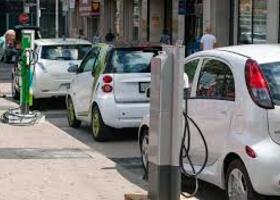Build electric car battery to drive engine.
Understanding the principles of electric car battery operation is crucial as we transition to a more sustainable future. At the heart of this transition lies battery capacity, which refers to the amount of energy a battery can store and subsequently deliver to power an electric vehicle (EV). The higher the battery capacity, the longer an EV can travel on a single charge, making it a pivotal factor in consumer adoption.
C=Q/V
from physics, where C is the capacity measured in Farads and Q represents the Charge measured in Columbus, and V is the battery voltage. To build a battery for an electric car, in general, a capacity of (40-100) kwh is needed
Battery energy(kWh),
s in chemistry and engineering are paving the way for smarter battery management systems that optimize usage and longevity. As we delve deeper into these principles, it becomes clear that understanding electric car batteries is essential—not just for enthusiasts but also for anyone considering making the switch to electric vehicles. Embracing this knowledge can empower consumers to make informed choices while supporting a greener planet through sustainable transportation solutions.
Electric car batteries differ from starting, lighting, and ignition batteries as they are using to give power to the electric motor. These batteries are usually rechargeable batteries. Usually, the traction battery pack is placed in the back of the electric car.
Battery Type
There are several types of electric car batteries including lithium-ion, nickel-metal hydride, and solid-state batteries.
The most common battery type in modern electric vehicles is lithium-ion and lithium-polymer. That because of their high energy density according to their weight. The battery pack makes up a significant cost of battery electric vehicles or hybrid electric vehicles.
Battery Charging
Electric car batteries can be charged by plugging into a charging station or using a portable charger.
Batteries such as electric car components must be periodically recharging. BEVs most commonly charge from the power grid (at home or using a street or shop recharging point).
Charging time at home has a limit by the capacity of the household electrical outlet unless specializing electrical wiring work is making. Electric cars like Tesla Model S, Renault Zoe, BMW i3, etc. It can recharge their batteries to 80 percent at quick-charging stations within 30 minutes.
You must take care of the quantity of electricity within the battery before charging it.
Sometimes, the batteries have an insert “memory”, and if the battery isn’t run completely before charging it lose a number of its potency.
Build Electric Car Battery
Before watching the construction of a battery for an electric car using Catia software in the video, you need to know the following.
Battery packs will always incorporate many discrete cells connected in series and parallel to achieve the total voltage and current requirements of the pack. Battery packs for all electric vehicles can contain several hundred individual cells. Each cell has a nominal voltage of 3-4 volts.
In certain situations, depending on space or voltage, the cells can be grouped into several modules. I used 46 diameter 80 height cell size for this battery. Usually these dimensions are secret. However, the 4680 cell is used in practice. By following the construction in the video you will see that it is not difficult to make any kind of changes. Thus, the number of cells can be changed, the size of the package can be changed or modules can be added that are welded together.

